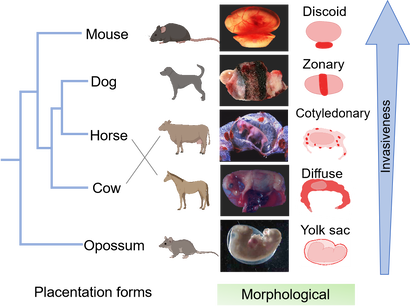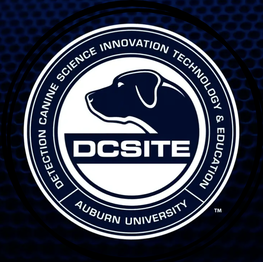Mammalian Placenta Evolution
 Diverse morphology of mammalian placentation.
Photos are taken of our experimental samples (except the cow placenta).
(Redrawn from R. Bowen (2011))
Diverse morphology of mammalian placentation.
Photos are taken of our experimental samples (except the cow placenta).
(Redrawn from R. Bowen (2011))
Placenta is an important organ connecting the mother with the developing embryo in uterus. It transfers nutrients, respiratory gases and water from maternal tissue to a growing embryo and removes waste from it. The primary function of placenta is fundamental to reproductive success and is conserved among evolutionary clades. However, the shape of placenta is highly variable. In fact, it is arguably the most morphologically diverse organ in mammals.
There are five major placental shapes in mammals, namely, the yolk sac placenta in marsupials like opossums, the diffused placenta in horses and pigs, the cotyledonary placenta in cattle, the zonary placenta in carnivores including cats and dogs, and the discoid placenta in most primates and rodents, like humans and mice. The invasiveness of the trophoblast to the endometrium varies among different placentation forms.
There are five major placental shapes in mammals, namely, the yolk sac placenta in marsupials like opossums, the diffused placenta in horses and pigs, the cotyledonary placenta in cattle, the zonary placenta in carnivores including cats and dogs, and the discoid placenta in most primates and rodents, like humans and mice. The invasiveness of the trophoblast to the endometrium varies among different placentation forms.
|
It is of great interest why these animals have evolved different types of placentation and how structural innovation is linked to function novelty. While the morphology of placenta has been well characterized in a number of species, little work has been done to understand the genetic basis of these novelties. Unique zonary placenta in dogs presents an interesting and important model for understanding the evolutionarily determined aspects of mammalian placentation. And its study is still at a preliminary stage.
|
We characterize the expression landscape for placentas of different types in representative animals by RNA-Seq. After retrieving orthologs among selected species, differential gene expression analysis in placental samples will give us an idea about the composition of core placental transcriptome gene group and genes with unique expression profile in some type(s) of placentation. Then we perform pathway enrichment analysis to explore genes responsible for structural and functional innovations in various placenta types. Hopefully our research will provide valuable insights into evolutionary mechanisms of mammalian placenta trough these comparative genomic and transcriptomic analysis methods.
CollaborationOur lab collaborates with the Canine Performance Sciences (CPS) program here at Auburn University College of Veterinary Medicine, one of the best breeding and training programs in the United States for the state-of-the-art detection dogs since 1999. It provides an excellent resource for dog placenta research, with high quality placental samples in a genetically trackable population. The placental samples used in this research are collected from individuals on DCSITE (Detection Canine Science Innovation Technology & Education) program strictly under IACUC approval.
|

